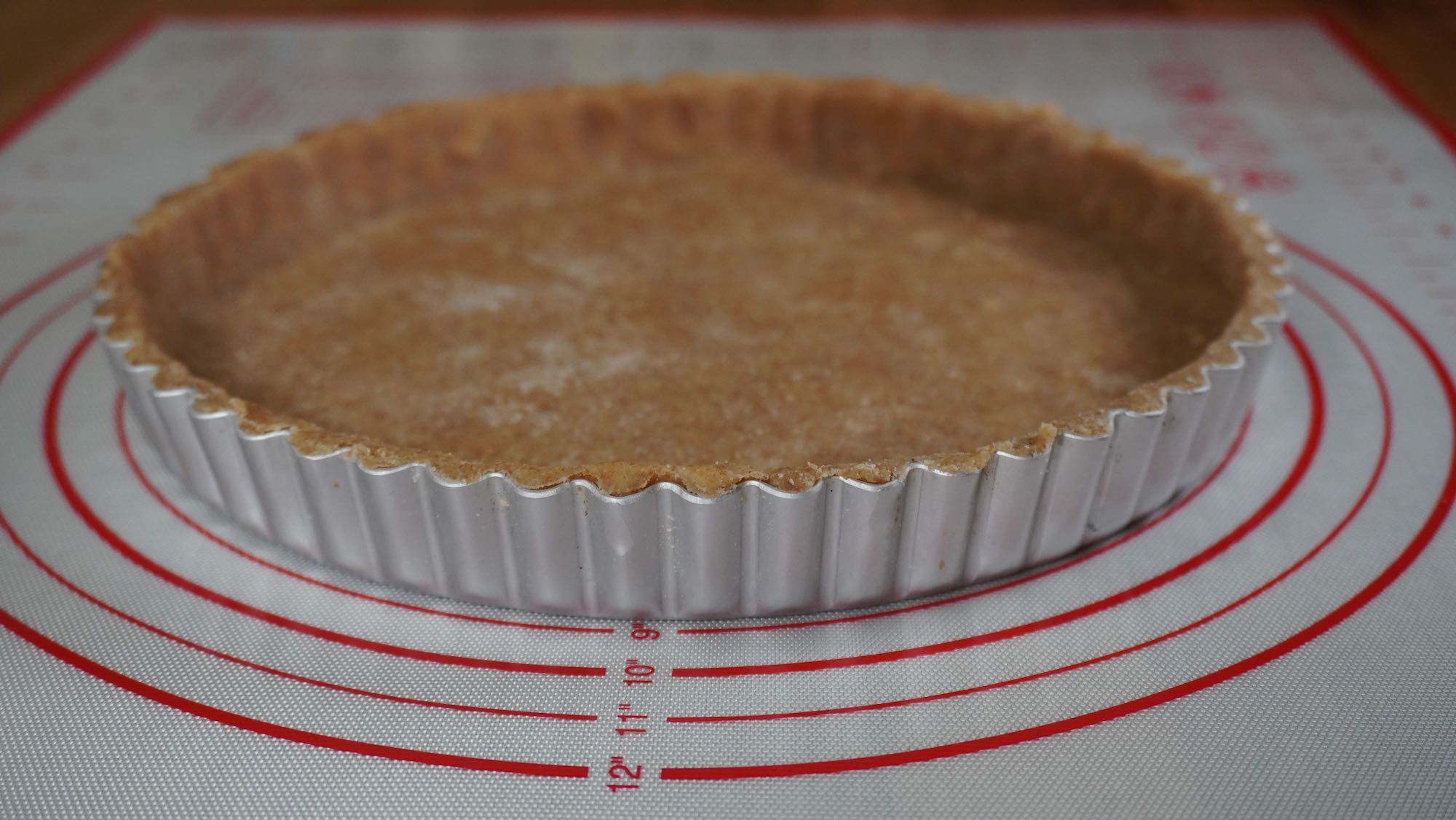How to Make Spelt Shortcrust Pastry (Easy Pie Crust Recipe)
Make it ahead of time and have it in the fridge on standby to whip up a pie in no time. I leave out the sugar so I can use the pastry for either sweet or savoury. Use this spelt flour pie crust recipe for a quiche base, savoury tart, sweet-tart or fruit flan.

Wondering how to make a pie crust with spelt then this is an easy spelt flour pastry recipe to use for both sweet and savoury pie for a 23cm (9-inch pie or tart base). I always thought it was super hard to get the right texture for pastry and taste but it's easy with the right ingredients and method, I will never buy store-bought pastry again. Make it ahead of time and have it in the fridge on standby, to whip up a pie in no time. I leave out the sugar so I can use the pastry for either sweet or savoury. Use this spelt flour pie crust recipe for a quiche base, savoury tart, sweet-tart or fruit flan.
Ingredients (for one layer)
- Spelt flour (white or wholemeal) – 250g (about 2 cups)
- Chilled cubed butter – 125g (about 1/2 cup)
- Pinch of salt
- Egg Yolk – 1
- Cold water – 20ml (1 - 2 tbsp)
- Optional sugar for a sweet crust – 2-4 tbsp
How to Make the Pastry
- PASTRY mix the flour and butter together with your fingertips until it looks like small breadcrumbs. Then add in the water and egg until combined into a firm dough. You can use your stand mixer but I find that the result by hand is far superior.
- PLACE the dough onto a floured surface and form a ball, flatten slightly and wrap in plastic wrap press to form a disc shape.
- CHILL in the fridge for 30-60 minutes. 60 minutes is ideal.
- TART – preheat the oven 160˚C fan, 180˚C/ 350˚F Gas Mark 4
- REMOVE from the fridge rest for 10 minutes (especially in winter) then roll out on a floured surface or a pastry mat about 5cm bigger than your pie or tart dish and aim to roll the dough is about 3mm thick. Roll the pastry back over the rolling pin then gently flop the pastry into the tin and press in the sides. Don't be alarmed if your wholegrain spelt pastry cracks. It is problematic for cracking. I just press the cracks together manually. Ensure the sides are press against the outside edge and using the rolling pin, roll over the outside edge or cut away with a knife. Add fork pricks to the pastry. This I found out recently is called docking the pastry. This allows steam to escape so your pastry doesn't bubble up.
- CHILL in the fridge for 15 minutes
- REMOVE from the fridge and cover with baking paper, and using baking beads to weigh down the paper, or rice.
- BAKE for 10 minutes. Remove the baking weight and paper and bake for a further 10 minutes. This process is called blind baking. This ensures that your pastry is golden brown and cooked.
- POUR the filling into the pastry shell.
Sue Maree P Baking Tips
- BLIND BAKING – You don't have baking weights. A tip I read recently Beatrix Bakes by Natalie Paul, line the raw pastry with foil and tuck the foil around the edges of the tin and fill with sugar (as a weight), then afterwards store the foil and sugar in a sealed container to re-use.
- EGG or not. I have made pastry both ways. When you add the egg yolk it adds colour and the pastry has a better 'melt in your mouth taste' when baked.
- WHOLEGRAIN vs WHITE – you may find that the texture is slightly drier and the pastry may crack. Add a little water to your fingertips and repair.
- FINGERTIPS instead of the whole hand creates lots of air circulating.
- BUTTER – cold butter gives you a flakier pastry.
- FREEZE dough – 8 weeks.
- CHILL for up to 3-4 days.
